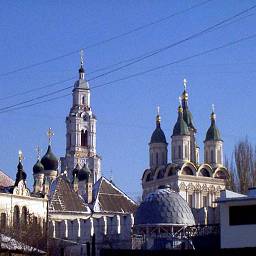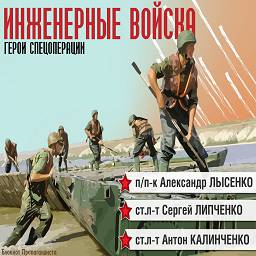Путь:
Quick Links
Language [ ENGLISH РУССКИЙ ]
Search
Продвинутый поиск
New Materials
- Ease of Implementation and Efficiency: The Advantages of DOBOT Collaborative Robots 2025-09-27
- Comprehending Viagra Soft: Advantages, Drawbacks, and Application 2025-01-24
- Affordable Instagram Growth with InstagFollowers.shop: Free Followers and Guaranteed Results 2024-12-18
- Buy instagram followers 2020-09-09
- FISCAL FEDERALISM THE CANADIAN EXPERIENCE 2020-03-22
- Analysis of differentiation of socio-economic development of the Russian regions 2020-03-22
- Economic development in the Russian regions: institutional and macroeconomic problems. 2020-03-22
- Russia's North: Economic Problems of Development 2020-03-22
- Problems of Fiscal Federalism in Russia 2020-03-22
- REGIONAL ASPECTS OF THE FEDERAL ECONOMIC POLICY 2020-03-22
- THE TELEVISIONS PROJECT 2020-03-22
- Journeys into History Through the Future 2020-03-22
- Artists Bring the Computer to Life 2020-03-22
- Culture in the Upcoming Millenium 2020-03-22
- What is a work of telecommunicative art 2020-03-22
Картинка недели
user
Evaluation section:
0
Категории
Tatiana Didenko Executive Producer
Date of publication: 2020-03-22 17:50:29Дата модификации: 2020-03-22 17:50:29
Views: 1476
Author: admin
is a music critic who, for the past four years, produces the monthly program "Silence No. 9" for the second Russian Channel as well as regular music folklore programs. She is a member of the New Screen Technology Association, and was on the board of media experts for the Soros Center of Contemporary Art annual exhibition: New Media Topia. She has also produced documentary works such as "Bezumny Fritz" which reveals the history of the changing attitude about the Russian defeat of the German army - through the narrative films created in Soviet studios from the 50's, 60's and 70's: "Metropolis" a history and subjective view of the Moscow Subway; and "Demonstration Astro". a tour of the Russian rave scene of the 1990s.
The Russian television (TV channel "Rossia") came into being four years ago - in April 1991. The USSR was still alive, and Ostankino, considered then the Central Television, was filling the air, but shoots of a new age - both in politics and life became increasingly noticeable, finally finding their way to "the most popular" of the mass media... The Russian Broadcasting Company invited people with no previous experience in this sphere, yet energetic and competent - in order to reconsider the content of TV programmes and to create an alternative TV channel, conceived as an alternative primarily to the official,, tedious and old-fashioned TV of the time.
So, four years ago there appeared a new TV programme "Silence #9"- its name being a hybrid of two famous titles - that of the book by John Cage and the song by John Lennon. "Silence 49" and its producer Tatiana Didenko focused their attention on contemporary art in all its variety, ranging from performance to video art, and from experimental music to most diverse exposition projects and exhibitions in independent galleries in Moscow and elsewhere... All what "Silence #9" shows or has shown pertains to specifically TV genre, having little to do with direct coverage of events. A concert- installation, rather than the concert, a video-fantasy about a festival, rather than the festival ("Unidentified Movement" in Volgograd), an action by Komar and Melamid transformed into a literal realisation of their idea to place a running electronic line on top of the Lenin Mausoleum...
Very soon Silence #9P became a programme, Which existed In Its own - Virtual - Space. By no accident It pays Special attention to new media art and to how Russian artists and musicians contribute to the development of both technology and aesthetics in video-art and multimedia. It was "Silence #9", that acquainted the TV audience with video-works by Serguei Shutov and Serguei Karsaev, projects by Olga Tabreluts and Ilia Piganov, Vadim Fishkin and Anatoly Zhuravlev, Timur Novikov and Vladik "Monroe" Mamyshev, German Vinogradov, Alexander Petliura, Alexei Beliaev and Kirill Preobrazhensky, Petr Pospelov and Boris Yukhananov...
Based in a virtual world, "Silence #9" attempts to adequately convey the specificity of the new aesthetics and of the young artists' world perception - plunging into their mode of life, exploring their feelings, including their love for techno-music and discotheques, which doesn't mean, however, the negation of all that wonderful "old" experience, the "classical" Soviet art, the love for which has ceased to be the "disease" of only most outrageous radicals. Thus, "Silence #9" started to produce its own video-films, dedicated to totalitarian aesthetics and its today's perception (projects by Vladimir Sorokin "Superiority complex - 2" and "Mad Fritz", a collage of 26 Soviet films about World War 2), a trilogy about Stalin's plans for reconstruction of Moscow: "Metropolis" (featuring Moscow subway), "Aquaphony" (the story of the canal Moskva-river - Volga), and "Airoville" (conquering of the air and the outer space in 1930 - 1960s.)
Young experimental artists willingly cooperate with Tatiana Didenko, her programme offering them possibilities for realisation of absolutely non- commercial projects and ideas. The TV bridge "Checkpoint' 95" is the next step not only in the development of local television, but also in education of Russian TV audience, which so far has a very vague idea of telecommunications and communication between people of different cultures, in different countries and continents via new information systems. All the staff of "Silence #9" and the friendly programme, which provided technological facilities for realisation of the project, are proud to pioneer in this field.
Evaluation of the document:
0
Article description: is a music critic who, for the past four years, produces the monthly program "Silence No. 9" for the second Russian Channel as well as regular music folklore programs.
Other articles of the section: user
Previous ABC Amber Conversion and Merging SoftwareNextWhat is a work of telecommunicative art
Leave a comment
Новые альбомы:
Nested sections






